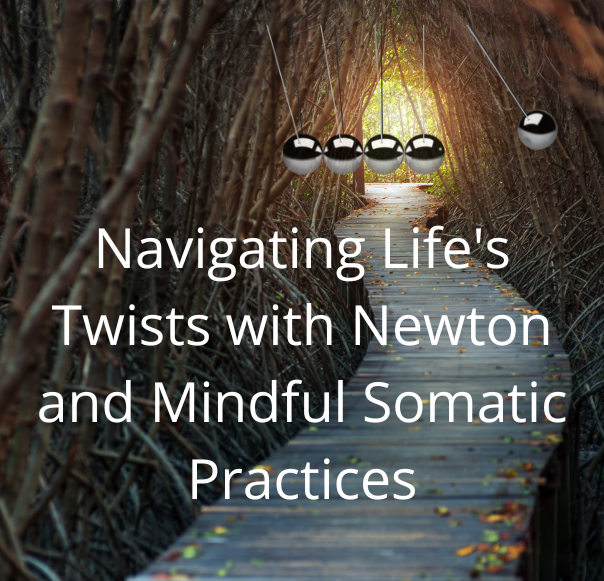In the grand tapestry of existence, life often throws us unexpected twists and turns, challenging our equilibrium and testing our resolve. Yet, amidst the chaos, there exists a delicate balance waiting to be discovered—a balance echoed in the elegant principles of physics and the profound wisdom of mindful somatic practice.
Sir Isaac Newton, the father of classical mechanics, unveiled one of the fundamental laws governing motion—the third law: “For every action, there is an equal and opposite reaction.” At first glance, this law seems confined to the realm of physics, governing the interactions of objects in motion. However, upon deeper reflection, its implications extend far beyond the realm of science, offering invaluable insights into the art of navigating life itself.
Consider the analogy of life as a journey through space, where we are constantly in motion, encountering forces that propel us forward or hold us back. Just as Newton’s third law suggests, every action we take sets in motion a corresponding reaction—a ripple effect that reverberates throughout our existence. In essence, the choices we make, the words we speak, and the deeds we perform all influence the trajectory of our journey, eliciting responses from the world around us.
Now, let us delve deeper into the realm of mindful somatic practice—an ancient art rooted in the cultivation of awareness and presence within the body. Somatic practices, such as yoga, tai chi, and mindfulness meditation, invite us to reconnect with our physical selves, fostering a deep sense of embodiment and attunement to the present moment. Through gentle movement, breath awareness, and mindful observation, we learn to navigate the intricate terrain of our inner landscape with grace and intention.
In the context of Newton’s third law, mindful somatic practice offers a powerful lens through which to explore the dynamics of action and reaction in our lives. By cultivating a heightened awareness of our bodily sensations, emotions, and thought patterns, we gain insight into the subtle interplay between cause and effect. We begin to recognize how our actions ripple outward, shaping our experiences and influencing the world around us.
Moreover, somatic practices teach us the art of yielding and responding with fluidity to life’s myriad challenges. Just as a skilled martial artist utilizes the principle of “softness overcomes hardness” to neutralize opposing forces, so too can we learn to navigate adversity with resilience and poise. Through mindful movement and breath, we cultivate a sense of inner stability that allows us to remain centered amidst the storm, responding to life’s twists and turns with ease and grace.
In essence, the correlation between Newton’s third law and mindful somatic practice lies in their shared emphasis on balance, harmony, and reciprocal exchange. Just as every action elicits a reaction in the physical world, so too does every thought, word, and deed shape the course of our lives. By integrating the principles of physics with the wisdom of somatic practice, we gain a deeper understanding of our interconnectedness with the universe, empowering us to navigate life’s journey with mindfulness and compassion.
As we journey through the ever-unfolding landscape of existence, may we remember the timeless wisdom of Newton and the profound insights of mindful somatic practice. May we embody the spirit of balance and reciprocity, embracing life’s twists and turns with open hearts and steady minds. And may we dance gracefully with the forces that shape our destiny, knowing that in every action, there lies the potential for growth, transformation, and profound self-discovery.

